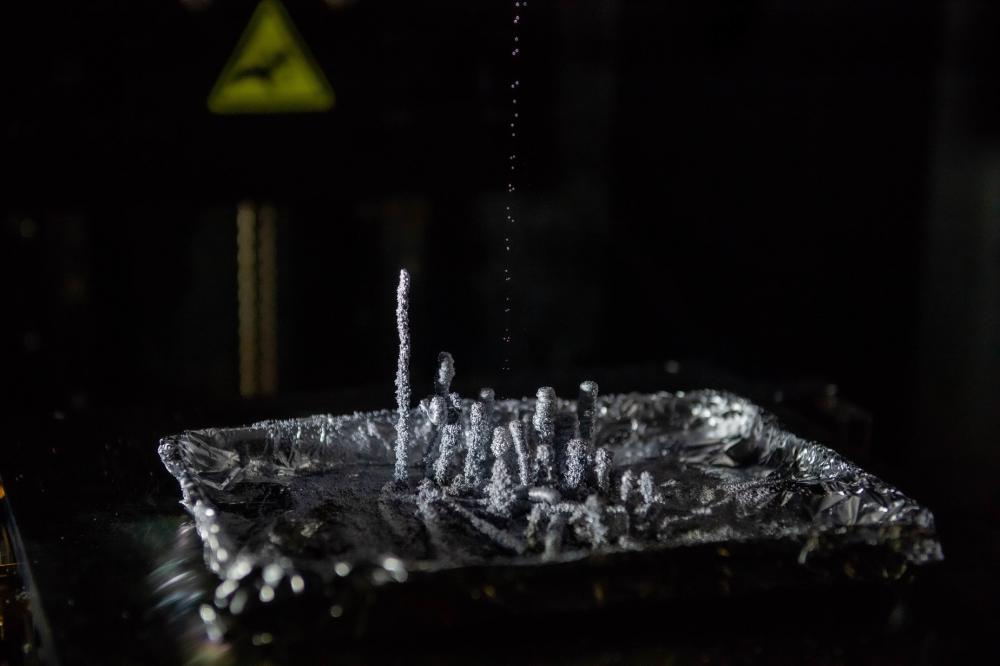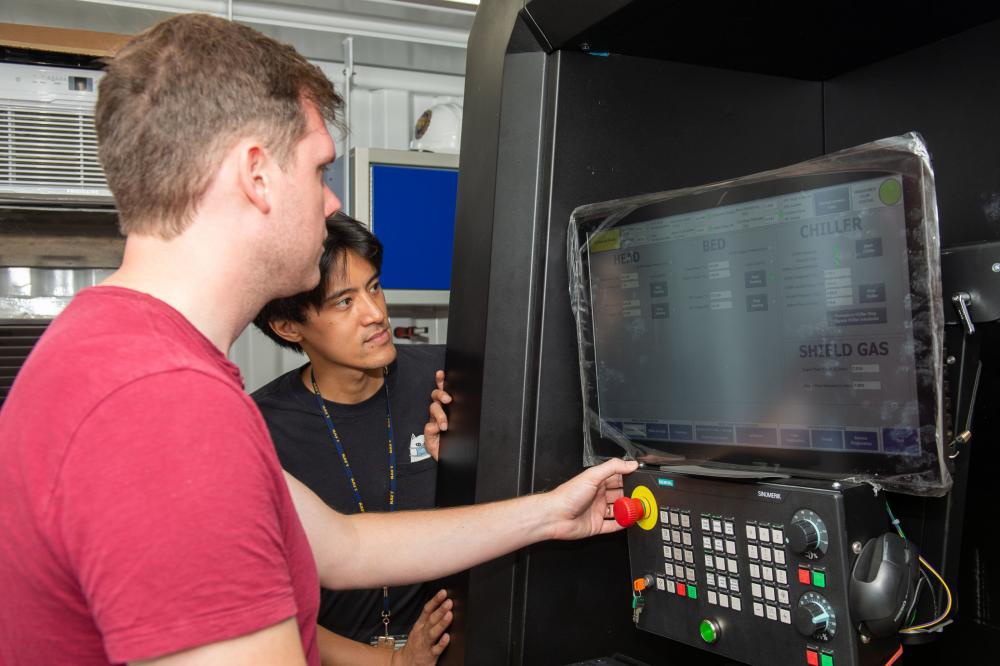Although the U.S. Navy has adopted additive manufacturing (AM) a bit more slowly than the U.S. Army and the U.S. Air Force, that has steadily begun to shift over the past year or so, along with the overall American military’s acceleration of its AM activity. One ship that has long been ahead of the curve on this trajectory is the U.S.S. Essex (LHD2), which is currently active under the Commander, Naval Surface Force, U.S. Pacific Fleet (COMNAVSURFPAC), Vice Admiral Roy Kitchener.
The Essex, a Wasp-class amphibious assault ship that originally launched in February 1991, was the first U.S. Navy vessel to have a 3D printer installed onboard, all the way back in 2014. The machine referenced in the present story — the ElemX Liquid Metal Printer, Xerox’s first and only 3D printing system thus far — was installed aboard the Essex a year ago, as part of a strategic collaboration between Xerox and the Naval Postgraduate School (NPS). The ElemX can print aluminum parts up to 10” x 10”.
Now, the NPS and COMNAVSURFPAC have followed up on that initial step by testing the viability of the technology while the Essex is at sea. The Navy chose a particularly dramatic event to debut the latest phase of research: this year’s Rim of the Pacific Exercise, or RIMPAC; the world’s largest international maritime war games.

In a press release, Lt. Cmdr. Nicolas Batista, the Essex’s Aircraft Intermediate Maintenance Department (AIMD) officer, commented, “The capabilities of the 3D printer will enable Essex to become more self-sufficient. …[AM has become a priority] and it’s evident that [it] will provide a greater posture in warfighting efforts across the fleet and will enhance expeditionary maintenance that contributes to our Surface Competitive Edge.”

At this point, the Essex’s crew has only run a diagnostic test with the ElemX. Nonetheless, the fact that this happened while the ship was at sea already represents the passing of an enormous threshold, compared to all prior U.S. Navy AM efforts. Jonah Waage, who serves as an Aviation Electronics Technician, 2nd Class aboard the Essex, noted, “We have never been able to make something [at sea] with the precision and intricacy that this new 3D printer will provide…”Moreover, while admittedly impressive, the technological evolution involved does not constitute the most critical signal emerging from this development.
Even more critically, what’s being evidenced here is the evolution to the occupational roles making up the U.S. military’s chain-of-command. The press release notes that, now that the diagnostic test has been successful, the first group of sailors aboard the Essex will be trained to use AM in support of military supply chains. Among this group is Roxanne Barrera, Aviation Structural Mechanic, 3rd Class, who said, “I just want to learn to operate [the printer] and share [the knowledge] with other people.”
The fact that the U.S. military is building some roles like “Additive Manufacturing Technician” into the equation, across all its branches, conveys that the AM sector has more or less officially built a permanent niche for itself in the U.S. industrial landscape. Additionally, the U.S. Navy’s catching up to the other branches in its AM progress suggests that the application of AM in the maritime sector, in general, could start catching up with the industry at-large.
Images by Petty Officer 3rd Class Isaak Martinez, courtesy of U.S. Navy
Subscribe to Our Email Newsletter
Stay up-to-date on all the latest news from the 3D printing industry and receive information and offers from third party vendors.
You May Also Like
Gorilla Sports GE’s First 3D Printed Titanium Cast
How do you help a gorilla with a broken arm? Sounds like the start of a bad joke a zookeeper might tell, but it’s an actual dilemma recently faced by...
Nylon 3D Printed Parts Made More Functional with Coatings & Colors
Parts 3D printed from polyamide (PA, Nylon) 12 using powder bed fusion (PBF) are a mainstay in the additive manufacturing (AM) industry. While post-finishing processes have improved the porosity of...
$25M to Back Sintavia’s Largest Expansion of Metal 3D Printing Capacity Since 2019
Sintavia, the digital manufacturing company specializing in mission-critical parts for strategic sectors, announced a $25 million investment to increase its production capacity, the largest expansion to its operations since 2019....
Velo3D Initiates Public Offering in a Bid to Strengthen Financial Foundations and Drive Future Growth
Velo3D (NYSE: VLD) has been among a number of publicly traded 3D printing firms that have attempted to weather the current macroeconomic climate. After posting a challenging financial report for 2023,...































